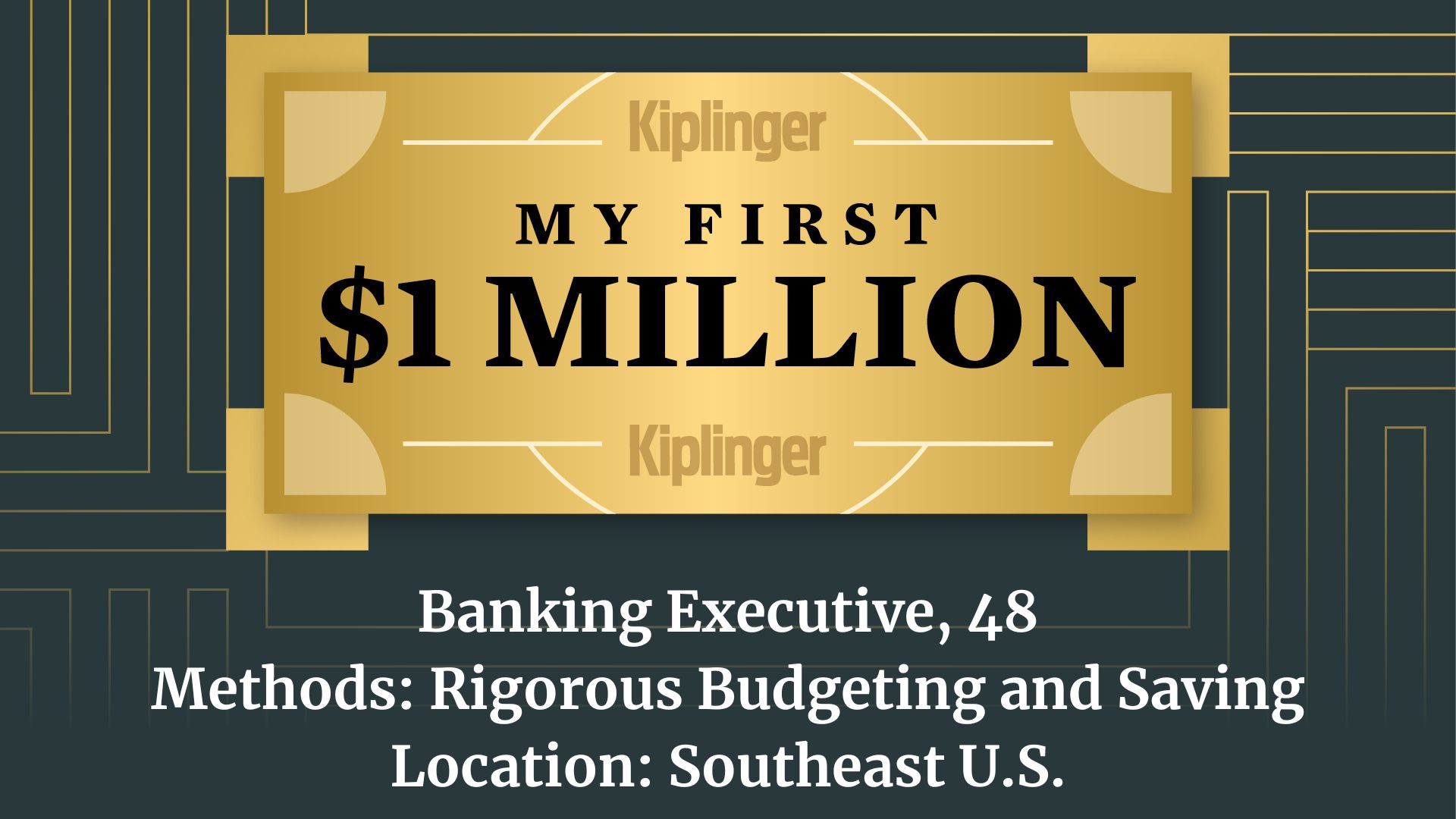Alternative Investments Under Trump: What You Need to Know
As access to alternative markets opens up, retail investors looking to enhance their long-term financial outcomes have more opportunities to carefully consider.


The investment landscape has undergone a fundamental transformation over the past few decades, dramatically changing how retail investors can build wealth.
This evolution, coupled with recent regulatory shifts, presents both opportunities and challenges that warrant careful consideration.
The traditional path to investing in high-growth companies has shifted significantly since the dot-com era. In the 1990s, investors could participate in the growth stories of companies like Amazon, which went public with annual revenue under $50 million.
From just $107.88 $24.99 for Kiplinger Personal Finance
Become a smarter, better informed investor. Subscribe from just $107.88 $24.99, plus get up to 4 Special Issues

Sign up for Kiplinger’s Free Newsletters
Profit and prosper with the best of expert advice on investing, taxes, retirement, personal finance and more - straight to your e-mail.
Profit and prosper with the best of expert advice - straight to your e-mail.
Today, that opportunity has largely vanished. The median age of companies at IPO has increased from six years in 1980 to 11 years in 2021, while median revenue at IPO has grown from $30 million to more than $180 million. Companies are staying private longer, fueled by abundant private equity capital.
Access points and vehicle structure
Major private equity firms are creating new access points through business development corporations (BDCs) and interval funds. These vehicles mirror the familiar structure of mutual funds, complete with ticker symbols and CUSIP numbers.
BDCs typically offer liquidity ranging from daily to quarterly windows, with management fees generally falling between 1.5% and 2%. Their correlation to public markets, typically between 0.6 and 0.7, requires careful consideration in portfolio construction. Interval funds provide quarterly redemption windows with limits typically ranging from 5% to 25% of fund assets.
Portfolio construction framework
A robust integration framework should consider three distinct tiers of asset allocation based on the liquidity timeframes of your investment holdings. The base foundation should maintain about 50% to 60% in daily liquid investments such as public equities.
This would be followed by 25% to 30% in investments offering monthly or quarterly liquidity, such as interval funds that invest in private and alternative investments.
The remaining 10% to 15% can be allocated to opportunities with lockup periods extending beyond one year, including, but not limited to, private equity or real estate.
This tiered approach enables strategic alternative allocations of 20% to 25% and tactical alternative allocations of 10% to 15%. If you implement this suggested framework inside of a tax-advantaged account such as an IRA, it could be easier to navigate into the world of private and alternative investments.
This is a big change from the long-recommended 60/40 stock and bond portfolio, so taking small, initial steps will make this transition easier. Position sizing represents a critical component of alternative investment integration.
Initial positions should typically represent 2% to 3% of total portfolio value, with maximum exposure to any single manager capped at 7%.
The total alternative allocation within a portfolio should generally not exceed 35%, ensuring adequate diversification while maintaining meaningful exposure.
Regulatory environment and retirement innovation
Recent administrative changes have significant implications for retail alternative investment access. Executive Order 14067 on digital asset regulation has begun to provide a framework for cryptocurrency integration into traditional investment structures. Bitcoin's double-digit price increase since President Donald Trump’s election underscores the potential impact of supportive regulatory frameworks.
Georgetown University's Center for Retirement Initiatives suggests that a 10% allocation to illiquid assets — split between real estate and private equity — could improve retirement outcomes in 80% of scenarios.
Department of Labor guidance on alternative investments in defined contribution plans, coupled with proposed ERISA modifications, indicates a growing acceptance of alternative investments within retirement portfolios.
Risk management considerations
Risk management in alternative investing requires a comprehensive approach to both operational and investment due diligence. Fund structure and governance review must extend beyond surface-level analysis to include a detailed examination of valuation methodologies and reporting capabilities.
The evaluation of service providers, particularly fund administrators and auditors, provides crucial insight into operational stability.
The cost structure demands careful consideration beyond headline management fees. Carried interest arrangements typically range from 15% to 20% of profits above a specified hurdle rate. Operational expenses and transaction fees can significantly impact net returns, making it essential to understand their impact on expected internal rates of return before committing capital.
Another component to consider when evaluating risk management for private and alternative investments is to ensure that your investment timeframe aligns with the less liquid nature of alternative investments.
For example, if you are in need of funds to supplement your retirement income within five to seven years or less, you may have a far lower allocation to private and alternative investments than someone who has a 20- to 30-year investment time horizon.
Looking ahead
The institutionalization of retail alternative access continues to evolve. Market participants should anticipate continued compression of intermediary fees and enhanced standardization of reporting practices.
Secondary market liquidity is likely to improve as the market matures, while digital asset integration may create new opportunities for portfolio diversification. These two factors are critical levers to further enhance access to, and liquidity for, private and alternative investments to allow retail individual investors.
Portfolio construction will increasingly require sophisticated approaches to dynamic allocation modeling and correlation analysis. The quantification of liquidity premiums becomes particularly important as investors balance return potential against access to capital.
Risk factor decomposition helps ensure that alternative allocations provide genuine diversification benefits rather than simply repackaging traditional market exposures.
Successful investing requires constructing your portfolio with building blocks that are not correlated to each other to enhance returns while simultaneously mitigating the overall risk of your portfolio. This is the key to long-term success and positive financial outcomes across a retail investor's lifetime.
The path forward requires a careful balance between capturing opportunity and maintaining prudent risk management. As these markets continue to open up, educated and thoughtful participation will be crucial for retail investors looking to enhance their long-term financial outcomes.
Related Content
- What to Consider Before You Invest in Alternatives
- Do Alternative Investments Belong in Your Retirement Plan?
- Pros and Cons of Adding Alternative Investments to Diversify Your IRA
- How to Get into Alternative Investing
- Five Downsides of Investing in Alternatives
Profit and prosper with the best of Kiplinger's advice on investing, taxes, retirement, personal finance and much more. Delivered daily. Enter your email in the box and click Sign Me Up.

Henry Yoshida is the CEO, CFP and co-founder of Rocket Dollar. He is a successful entrepreneur, CFP practitioner and licensed real estate agent. Previously, he founded venture capital-backed robo-adviser retirement plan platform Honest Dollar (acquired by Goldman Sachs); was the founder of MY Group (acquired by CAPTRUST), a $2.5 billion assets under management investment firm; and was a vice president at Merrill Lynch.
-
 How to Safely Open an Online Savings Account
How to Safely Open an Online Savings AccountOnline banks offer generous APYs that most brick-and-mortar banks can't match. If you want to make the switch to online but have been hesitant, I'll show you how to do it safely.
-
 7 Ways to Age Gracefully Like the Best Stock Photo Seniors
7 Ways to Age Gracefully Like the Best Stock Photo SeniorsAs a retirement editor, I've gleaned valuable wisdom (and a lot of laughs) from one older couple that tops the seniors' stock photo charts.
-
 My First $1 Million: Banking Executive, 48, Southeast U.S.
My First $1 Million: Banking Executive, 48, Southeast U.S.Ever wonder how someone who's made a million dollars or more did it? Kiplinger's My First $1 Million series uncovers the answers.
-
 Time to Close the Books on 2025: Don't Start the New Year Without First Making These Money Moves
Time to Close the Books on 2025: Don't Start the New Year Without First Making These Money MovesAs 2025 draws to a close, take time to review your finances, maximize tax efficiency and align your goals for 2026 with the changing financial landscape.
-
 Is Fear Blocking Your Desire to Retire Abroad? What to Know to Turn Fear Into Freedom
Is Fear Blocking Your Desire to Retire Abroad? What to Know to Turn Fear Into FreedomCareful planning encompassing location, income, health care and visa paperwork can make it all manageable. A financial planner lays it all out.
-
 Gold and Silver Shine as Stocks Chop: Stock Market Today
Gold and Silver Shine as Stocks Chop: Stock Market TodayStocks struggled in Friday's low-volume session, but the losses weren't enough to put the Santa Claus Rally at risk.
-
 How to Master the Retirement Income Trinity: Cash Flow, Longevity Risk and Tax Efficiency
How to Master the Retirement Income Trinity: Cash Flow, Longevity Risk and Tax EfficiencyRetirement income planning is essential for your peace of mind — it can help you maintain your lifestyle and ease your worries that you'll run out of money.
-
 I'm an Insurance Expert: Sure, There's Always Tomorrow to Report Your Claim, But Procrastination Could Cost You
I'm an Insurance Expert: Sure, There's Always Tomorrow to Report Your Claim, But Procrastination Could Cost YouThe longer you wait to file an insurance claim, the bigger the problem could get — and the more leverage you're giving your insurer to deny it.
-
 Could a Cash Balance Plan Be Your Key to a Wealthy Retirement?
Could a Cash Balance Plan Be Your Key to a Wealthy Retirement?Cash balance plans have plenty of benefits for small-business owners. For starters, they can supercharge retirement savings and slash taxes. Should you opt in?
-
 Changes Are Coming for This Invesco Bond Fund
Changes Are Coming for This Invesco Bond FundThe Invesco BulletShares 2026 Corporate Bond ETF's bonds will mature in 2026. Here's what investors should do.
-
 7 Retirement Planning Trends in 2025: What They Mean for Your Wealth in 2026
7 Retirement Planning Trends in 2025: What They Mean for Your Wealth in 2026From government shutdowns to market swings, the past 12 months have been nothing if not eventful. The key trends can help you improve your own financial plan.